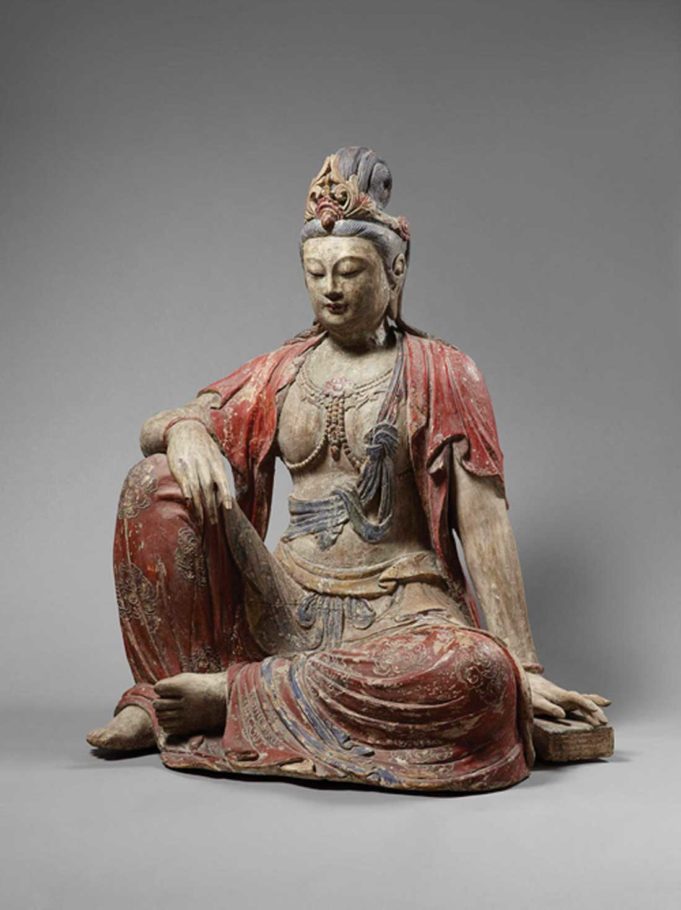When attorney Sam Myers and wife Myrna Myers moved to Paris in the mid-1960s, the young couple, both second-generation Americans from working-class families, were not yet collectors of art or antiquities. They had not, in fact, even considered the possibility that professional people of relatively modest means could own “real” pieces of artwork, assuming the art of collection to be the provenance of the wealthy and the elite.
However, a chance visit to an antique shop in Ascona, Switzerland, while on vacation introduced the Myerses to their first mentor — a Dr. Rosenbaum, who helped the couple begin their collection with the purchase of four Tanagra heads (Grecian terracotta, dating from the sixth or fifth Century BCE) at a price of only $20 each.
Their curiosity piqued and their appetites whetted, the Myerses returned to Ascona the following year, where they were taken with an Egyptian portrait head of black basalt. Though it was beyond their budget, Dr. Rosenbaum allowed them to purchase the piece on installments of $50 a month and to take it with them immediately for the sake of their young daughter. A thing of beauty, he stressed, affects the space around it, creating an atmosphere that impacts those who live with the object.
The Myerses took this lesson to heart, visiting galleries, museums, and auction houses, educating themselves as they went and purchasing pieces as they could. As their taste and acumen matured, their interest took them from the Greco-Roman world, through Egypt, Africa, and the Near East, eventually settling in the intricacies of the decorative arts of the Far East. Over the course of five decades living and traveling in Europe, Sam and Myrna Myers amassed a collection of some 5,000 pieces of exquisite quality.
More than 400 of these pieces make up the latest exhibit at the Kimbell Art Museum. Curated locally by the Kimbell’s Jennifer Casler Price, From the Lands of Asia: The Sam and Myrna Myers Collection is arranged into four sections focused on silk, porcelain, jade, and Buddhist sacred art. Each concentration is a master class on the history and significance of its objects, situating the pieces in their culture and economy of origin. Aided and deeply humanized by the thread of anecdotes provided by Sam Myers (Myrna passed away in 2012), the exhibit succeeds in presenting two narratives in parallel — telling both the story of the individual works, as well as the story of how they came to be a part of this collection.
“Costumes and Cultures” tells the tale of silk as not merely a textile but as a crucial trading commodity moving across Asia from the imperial courts of China and Japan. Stunning examples from Tibet and Uzbekistan show how Chinese patterns were cut and remade to fit the cultural traditions of their new homes. These astonishingly intricate and nuanced examples are displayed next to kimonos, Noh theater costumes, and scholars’ robes that span the 16th through 19th centuries.
In “An Ocean of Porcelain,” viewers learn along with the Myerses as they begin their collection of 17th-century blue-and-white ceramics from the Ming and Qing dynasties. The development of the iconic cobalt glaze created a global demand for Chinese pottery, which was standardized and mass-produced in the imperial kilns for export to Europe and the Middle East. Though the standard forms are well-represented, the genius of the collectors is evident in their fondness for “transitional” pieces — ceramics made in between dynasties, when the creativity of the artisans was allowed to flourish. Many of the pieces in the collection were acquired at auction after being salvaged from shipwrecks in the 1980s and are in pristine condition. Of particular note is the case of porcelain from Vietnam.
“The Magic of Jade” explores the mystical dimensions of this translucent stone in China, where it was painstakingly carved into ceremonial weapons and funerary ornaments.
“A Thousand Years of Buddhism” traces the spread of Buddhism from Northern India in the sixth century BCE, along the Silk Road into Tibet, China, Japan, and Korea. This section of the exhibit is somewhat less tactile than the other areas (the other pieces, made to be held, worn, and used can very nearly be felt in one’s hands as they’re observed) but constitutes an education in Buddhist iconography. Visit some of the Kimbell’s permanent collection of Asian art on display by the gift shop in the Piano Pavilion for an interesting opportunity to compare Buddhist art across collections.
The great success of this exhibit as presented by the Kimbell’s curatorial staff is in its ability (despite an almost overwhelming quantity of artworks) to create that “atmosphere” described by Dr. Rosenbaum, whereby individual objects of great beauty affect the space around them and invite the viewer to shift, slightly, in relation to the observed piece. Over the course of the exhibit, such a series of subtle alterations begins to allow some insight into the sensibility of the collection’s authors.
As is usual with the Kimbell’s exhibits, an excellent audio tour is available for free with the purchase of tickets or for a nominal charge for museum members
From the Lands of Asia: The Sam and Myrna Myers Collection
Thru Aug 19 at the Kimbell Art Museum, 3333 Camp Bowie Blvd, FW. Free-$14. 817-332-8451.












